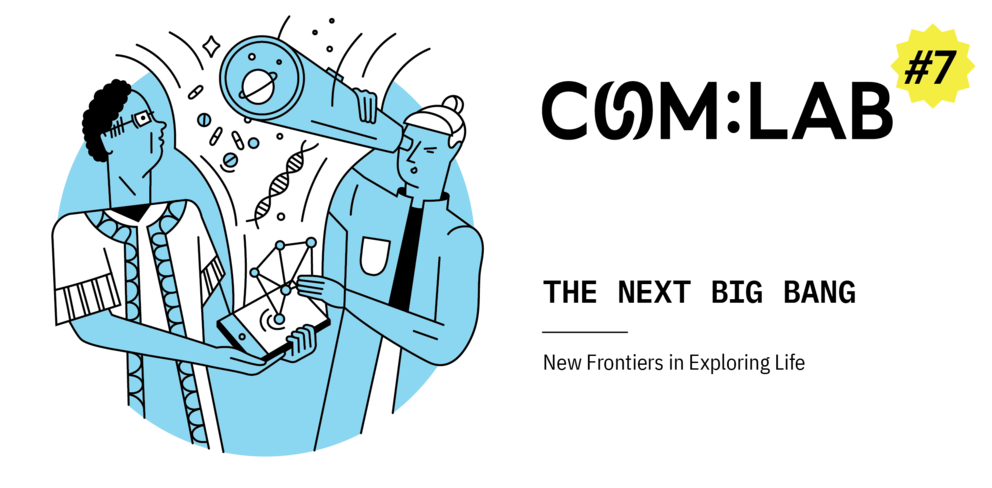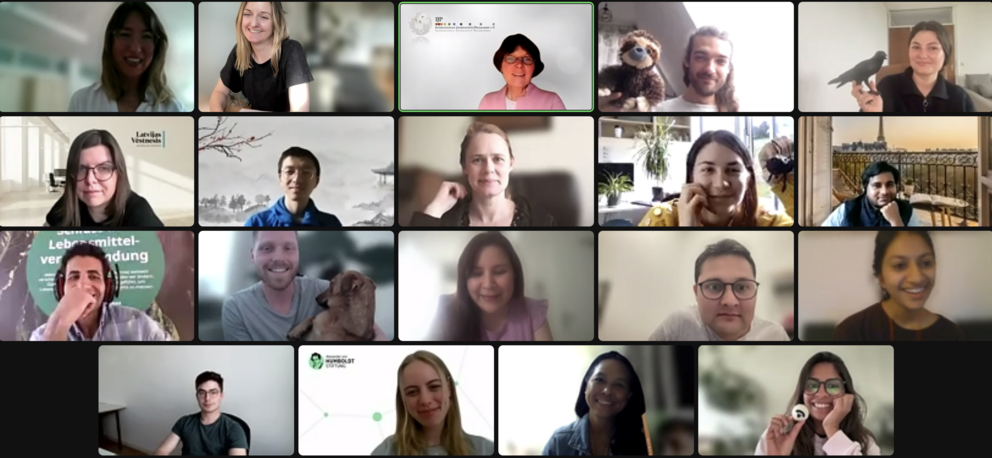

Contact
Press, Communications and Marketing
Tel.: +49 228 833-144
Fax: +49 228 833-441
presse[at]avh.de
Science has always experimented at the boundaries of what is possible, but how will new technologies shape our understanding of humankind and our habitats in the future? With new space missions, new AI-assisted approaches in medicine and rapid developments in biotechnology, ComLab#7 explored the research that will fuel our expectations in 2023. What are the new frontiers in research, and how can and should scientists and journalists communicate research that, whilst being promising, could lead to results and effects that are not yet foreseeable.
At the seventh Humboldt Communication Lab, researchers and journalists from 17 countries discussed the challenges involved in communicating various research fields – from the biosciences, chemistry and material sciences via computing, AI, photonics and fusion energy through to climate research and animal cognition. One of the main aims was to examine the different cultural and disciplinary perspectives on our understanding of scientific findings and how they feature in the various media.

In his opening address, Vito Cecere, Director Academic Relations, Education and Research Policy at the Federal Foreign Office, encouraged the participants to see themselves as important societal players in shaping an informed public. “Researchers and journalists are the ones who can give us a real and authentic picture of the state of research and what it can bring to society. At the same time, they can provide the solutions and visionary narratives for a shared future. ComLab is a great example of how we can come together as global citizens and work towards change.”
The seventh Communication Lab addressed nothing less than life itself. In his keynote, “Life beyond Earth,” Markus Kissler-Patig, head of Science and Operations at the European Space Agency (ESA), pointed out that our understanding of life is limited. Hence, the search for new forms of life outside of our solar system promises many exciting discoveries. He was optimistic that people would return to the Moon and land on Mars in this decade. With the global development of the aerospace industry, we are about to embark on a golden age of space research and exciting scientific insights, as Kissler-Patig stressed.
Space research fascinates many people and, not least thanks to the way it is presented in popular media and science fiction, attracts a lot of attention. But how can we communicate complex scientific findings in genetics or quantum research so that they are understandable? Clive Cookson, Science Editor of the Financial Times, reminded the participants that exciting stories from the world of science did not just rely on their news value. “When communicating science, journalists have to think about what excites people. Newsworthy innovation either affects people’s lives significantly through medicine or technology, or it must excitingly increase our knowledge about ourselves and our universe.” And Cookson had a recommendation for researchers in particular, “As a scientist you have to be prepared to simplify beyond what might be strictly speaking acceptable to specialists in your field. This may make you a bit uncomfortable but sometimes it is essential to communicate with the general public.” In general, he felt there was a lack of ethical perspectives in the debates about new discoveries in the life sciences. “The role of ethicists and in particular bioethicists needs to expand – both in science and in journalism.”
“Don’t just consider the words and the text – think visually!”
With Zulfikar Abbany, Senior Science Editor at Deutsche Welle, the participants discussed the advantages and disadvantages of scientific hype and the question as to what can go wrong when communicating controversial research fields like synthetic biology, reproduction biology or fusion technology. It was important to present research as a complex system involving various, and sometimes competing, approaches. Abbany explained that we had learned a great deal from the Covid-19 pandemic. “We had a situation where science had propped itself up as the [only] truth. And that’s a real problem, because people forget what science is: it’s little fragments of possible truths that build on what has gone before.” A realistic picture of research, said Abbany, also meant that researchers and journalists should be honest about setbacks and not only emphasise the successes. At the same time, science and journalism have to deal with structural challenges. “Journalism and science both face an increasingly restrictive environment, where there is less room for free thinking. We are increasingly dictated by data. The data tells us what we should be focusing on, what people want to see and what they will accept as well.”
In this round, too, the workshop was accompanied by mentors from the media and science communication. Jens Radü, managing editor at DER SPIEGEL, and Mohammed Yahia, executive editor at Springer Nature in the Middle East, gave the participants important input on their project ideas. Annegret Burkert of the Science Media Center Germany provided an overview of support measures for journalists and researchers in the field of science journalism, and Liliann Fischer of Wissenschaft im Dialog revealed the strategies that are necessary for effective science communication. Moreover, Fischer and the participants discussed the benefits and meaningful use of social media. The debate on the challenges of communication in the participants’ own countries met with a great response. Apart from the increasing commercialisation of journalism, the political influence on science was also discussed as well as the differences in the social status of researchers, for example in Indonesia, India and Canada.
